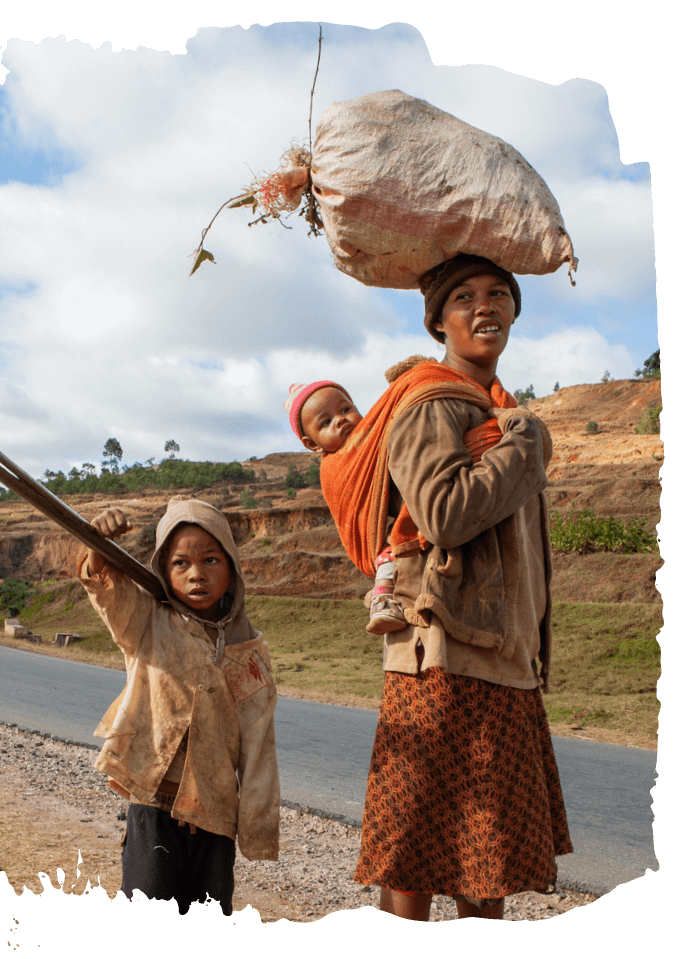Image: Students doing their homework under a streetlight in Conakry, Guinea. Rebecca Blackwell/The Associated Press.
Without access to safe and reliable energy, children and their families are plunged into total darkness every night. This is devastatingly limiting for their education, damaging to their health and well-being, and detrimental to the environment we all share.
“Providing reliable electricity is the first step toward helping a community lift itself from poverty.”
According to the World Economic Forum’s Energy Poverty Action Initiative.
Access to energy is fundamental to improving quality of life and is a key imperative for economic development.
Without reliable energy, many facets of human life are impacted.
Without safe and reliable lighting, children cannot study after dusk.
Using solid fuels and kerosene for energy contributes to indoor air pollution which causes 4 million deaths annually.
Fuel based lighting leads to the emissions of roughly 190 million tonnes of C02 per year.
Millions of people living on less than $1 a day, spend up to 40% of their income on kerosene lamps.
Millions of people living on less than $1 a day spend up to 40% of their income on kerosene lamps (United Nations Development Programme). Good economic health is the driving force behind a community’s growth, and energy poverty is a major obstacle in its way.
Moving away from expensive kerosene lighting can save a family $70 annually (Institute of Development Studies).
Image: Lifeline energy
Fuel based lighting leads to the emissions of roughly 190 million tonnes of CO2 per year (Environmental Science & Technology). The estimated carbon footprint of energy poverty accounts for almost 10% of annual global emissions (Our World in Data).
Addressing energy poverty directly relates towards addressing climate change.
Image: Gates Notes
Without safe and reliable energy for lighting, children cannot study after dusk. Without the right time dedicated to learning, most children living in energy poverty face lower literacy levels. As well as this, the lack of access to proper lighting means that children are often needed to travel long distances to gather necessary lighting resources, instead of pursuing their education (International Journal of Environmental Research and Public Health).
Image: SolarBuddy, Madagascar 2018
Using solid fuels such as fire wood and coal, and fuel-based lighting such as kerosene or diesel for energy contributes to indoor air pollution, leading to negative health consequences for families. An estimated 3.8 million people die each year due to the indoor pollution caused by dangerous cooking and lighting sources (World Health Organisation).
This is more than the annual deaths attributed to malaria (1.2 million) and HIV/AIDS (1.5 million) combined (National Geographic).
Image: SolarBuddy, Tanzania – cooking indoors

Image: SolarBuddy, Mother and children, Madagascar 2018
These are deaths that could be prevented through simple yet innovative solutions, such as the provision of solar energy. Due to being younger and less developed, children are at much greater risk of developing allergies and cancerous diseases from indoor air pollutants (World Allergy Organisation Journal).
As women are more likely to be completing domestic duties inside the home, they are more exposed to the health risks of energy poverty. Mothers who are exposed to pollutants such as black carbon are at higher risk of delivering babies born with abnormal lung functions and asthma (National Center for Biotechnology Information). Energy poverty is putting babies at a disadvantage before they are even born.
Approximately 51% of the world’s black carbon emissions emerge from household energy, primarily from the unsafe cooking and lighting fuels used by those experiencing energy poverty (Climate & Clean Air Coalition).
Black carbon is a type of fine particulate air pollution that contributes significantly to climate change.
CO2 Warming Effect
One kilogram of black carbon has the same warming effect as 700 kilograms of CO2 circulating in the atmosphere for 100 years (Illinois News Bureau). This means that in as little as two weeks, one kilogram of black carbon produces roughly the same amount of emissions released by 15 cars over an entire year.
Image: SolarBuddy – Madagascar, Black Carbon
SolarBuddy is creating awareness of the issues that surround energy poverty and providing innovative, sustainable solutions to illuminate the lives of children living in energy poverty.
We are focused on our three core areas of education, sustainable innovation and connecting communities through safe and reliable sources of energy. We align our work to key United Nations Sustainable Development Goals, because “energy is the golden thread that connects all the Sustainable Development Goals.” – United Nations Secretary-General Anotónio Guterres.
Education is core to the solution. Education helps to build awareness of the issues surrounding energy poverty and is the most important factor in creating equitable opportunities for a child. We’ve created immersive STEM school programs and informative corporate event programs, to help spread the word in unique and engaging ways about the impacts of energy poverty.
Sustainable innovation shapes our solutions. We design with people as our focus, ensuring that everything we create is simple, socially impactful, environmentally sustainable and makes a difference for a decade not a day. Our physical products provide a tangible solution to the problem of extreme energy poverty.
Connected communities are joined at the heart and united by need. When we share ownership of the problem, we lighten the load. The more hearts who join us, through donations, support and advocacy, the more positive outcomes we can create.
Play this short video to hear from our Global CEO, Simon Doble, in this video about the problems he’s seen first hand and the impact our solar light innovation can have.